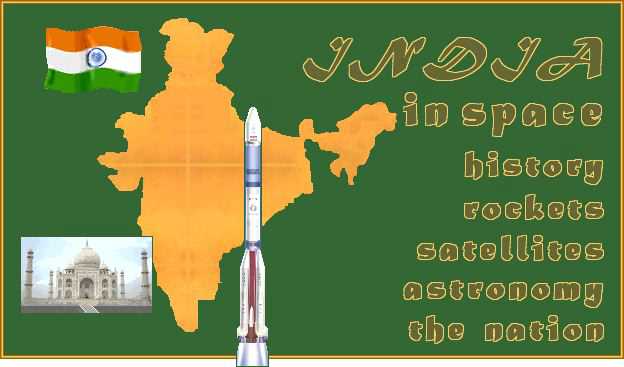

India: The Nation At a Glance
What today is known as the Republic of India is an ancient nation. In fact, civilization in the Indus Valley dates back more than 5,000 years.
India launches a powerful GSLV rocket toward spaceContemporary India has 28 states and 7 union territories.
- After Aryan tribes invaded the valley from the northwest around 1500 B.C., they merged with the earlier inhabitants to create what today is considered classical Indian culture.
- Arabs invaded the valley in the 8th century, Turks in the 12th century, and European traders in the 15th century.
- In the 19th century, Britain had political control of most Indian lands.
- Mohandas Gandhi and Jawaharlal Nehru used nonviolent resistance to British colonialism to bring independence to India on August 15, 1947.
- The subcontinent was divided into the small Muslim state of Pakistan and the large secular state of India. The two nations continue to dispute ownership of the small territory known as Kashmir.
- A third war between India and Pakistan in 1971 resulted in what had been known as East Pakistan becoming the separate nation of Bangladesh.
Over recent decades, India has made great economic gains, but still suffers under massive overpopulation, environmental degradation, extensive poverty, and ethnic strife. India also suffers natural hazards including droughts, flash floods, severe thunderstorms and earthquakes.
Location: In southern Asia, India is between Burma and Pakistan and is bordered the Arabian Sea and the Bay of Bengal.
The nations bordering India are Bangladesh, Bhutan, Burma, China, Nepal and Pakistan.
India's land mass is slightly more than one-third the size of the United States, yet its population is more than four times as great as the U.S.
The land ranges from deserts in the west, upland plain in the south, flat rolling plains along the Ganges Riverand Himalaya Mountains in north.
Climate: The weather in India varies from tropical monsoons in the south to a temperate climate in the north.
Highest and lowest: The lowest point in India is sea level at the Indian Ocean and the highest point is the Kanchenjunga Mountain at 28,209 feet.
Natural resources: In addition to arable land, India has the fourth-largest reserves of coal in the world, as well as bauxite, chromite, diamonds, iron ore, limestone, manganese, mica, natural gas, petroleum, titanium ore.
Population: In 2001, the population was estimated to be 1,029,991,145. Life expectancy at birth is 62.86 years.
The nation has 24 languages each spoken by a million or more persons. There also are numerous other mutually unintelligible languages and dialects.
The national language, Hindi, is spoken by about 30 percent of the people. Other languages include Assamese, Bengali, Gujarati, Hindustani, Kannada, Kashmiri, Malayalam, Marathi, Oriya, Punjabi, Sanskrit, Sindhi, Tamil, Telugu and Urdu.
Some of the religions are Buddhist, Christian, Hindu, Jain, Muslim, Parsi and Sikh.
India's ethnic groups include Indo-Aryan, Dravidian, Mongoloid and others.